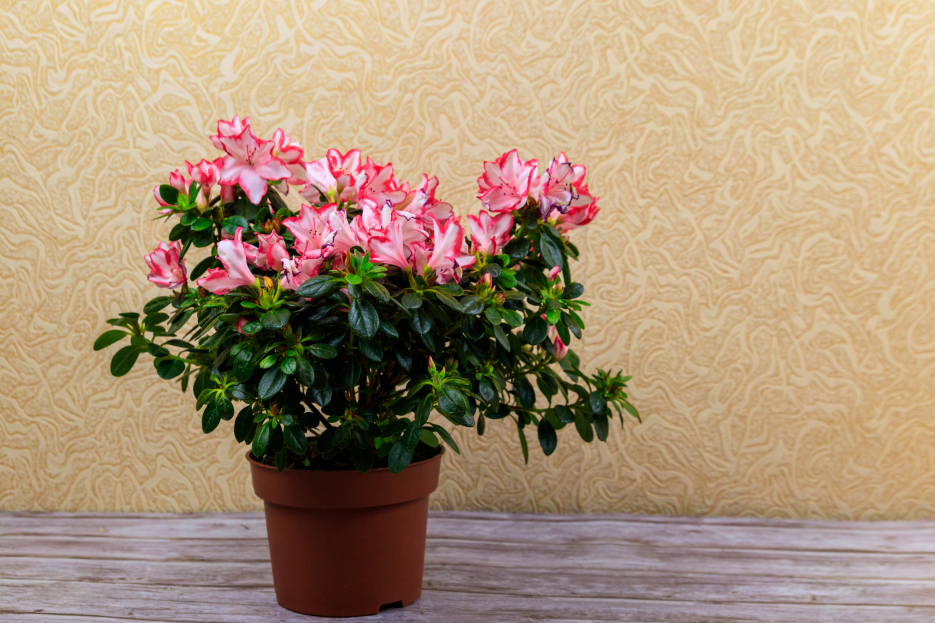
Azaleas are beloved for their stunning floral displays, often bursting into bloom with clouds of pink, red, white, or purple flowers. These vibrant shrubs are a favorite in both gardens and indoor settings thanks to their beauty and variety. While they’re sometimes seen as a bit finicky, proper care can keep azaleas healthy and blooming year after year.
Here’s everything you need to know to keep your azaleas thriving.
Azaleas prefer bright, filtered light. Outdoors, they thrive best in partial shade, especially in the afternoon when the sun can be intense. A location with morning sun & afternoon shade is ideal. Too much direct sun can scorch their delicate leaves and reduce bloom time.
For indoor azaleas, place them near a bright window where they can receive indirect sunlight. Avoid placing them in direct, harsh light or deep shade.
Watering is key with azaleas—they prefer consistently moist, but not soggy, soil. Check the soil regularly and water when the top inch feels dry. Always water thoroughly, allowing excess to drain out.
Azaleas are particularly sensitive to hard or alkaline water, so if possible, use rainwater, distilled, or filtered water to avoid leaf damage or buildup in the soil.
Avoid letting the soil dry out completely, as azaleas do not tolerate drought well—especially during blooming.
Azaleas enjoy cooler temperatures and moderate humidity. Ideal temperatures range between 60–70°F (15–21°C) during the day and slightly cooler at night. For indoor plants, avoid placing them near heat vents, fireplaces, or drafty windows.
If the air is dry, especially during winter, consider using a humidifier or placing the pot on a tray of pebbles with water to maintain moisture around the plant.
Azaleas need acidic, well-draining soil with a pH between 4.5 and 6.0. Use a potting mix specifically formulated for acid-loving plants or mix your own using peat moss, pine bark, and perlite.
Good drainage is essential. If the roots stay too wet, it can lead to root rot—a common issue with azaleas. Ensure containers have drainage holes and avoid letting the pot sit in standing water.
If growing outdoors, planting azaleas on slightly raised beds or slopes can help with natural drainage.
Feed your azaleas with a fertilizer designed for acid-loving plants, such as those used for camellias or rhododendrons. Apply in early spring and again after flowering, following the label instructions carefully.
Avoid fertilizing in late summer or fall, as this can encourage new growth that may be damaged by winter cold.
Prune azaleas right after they finish blooming. This helps shape the plant and encourages fuller growth for the next season. Avoid heavy pruning in late summer or fall, as it can remove next season’s flower buds.
Remove any dead or damaged branches and pinch off spent blooms to keep the plant tidy and promote new growth.
Know which type you have to provide the right long-term care—many florist azaleas are not cold-hardy and won’t survive outdoors in winter climates.
Regular care, clean tools, and proper watering go a long way in preventing most of these problems.